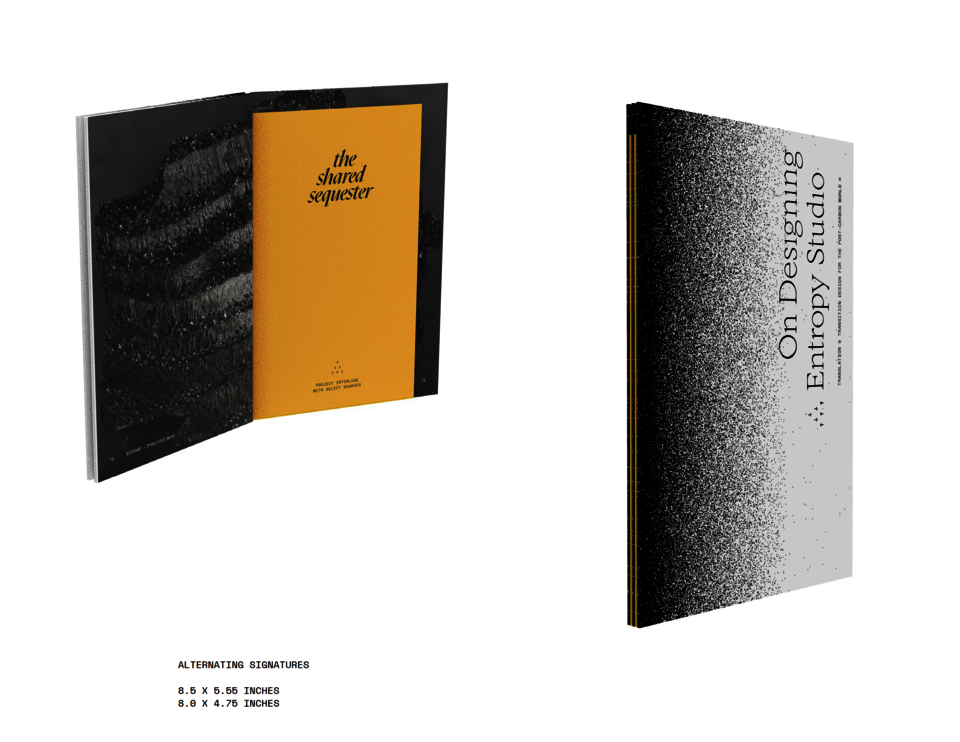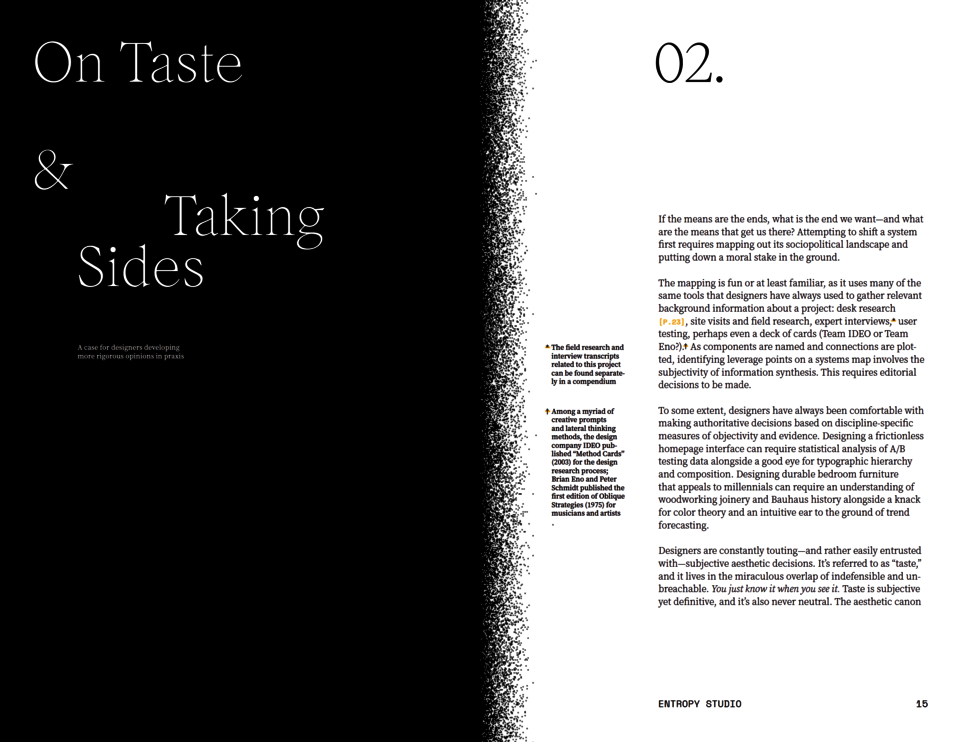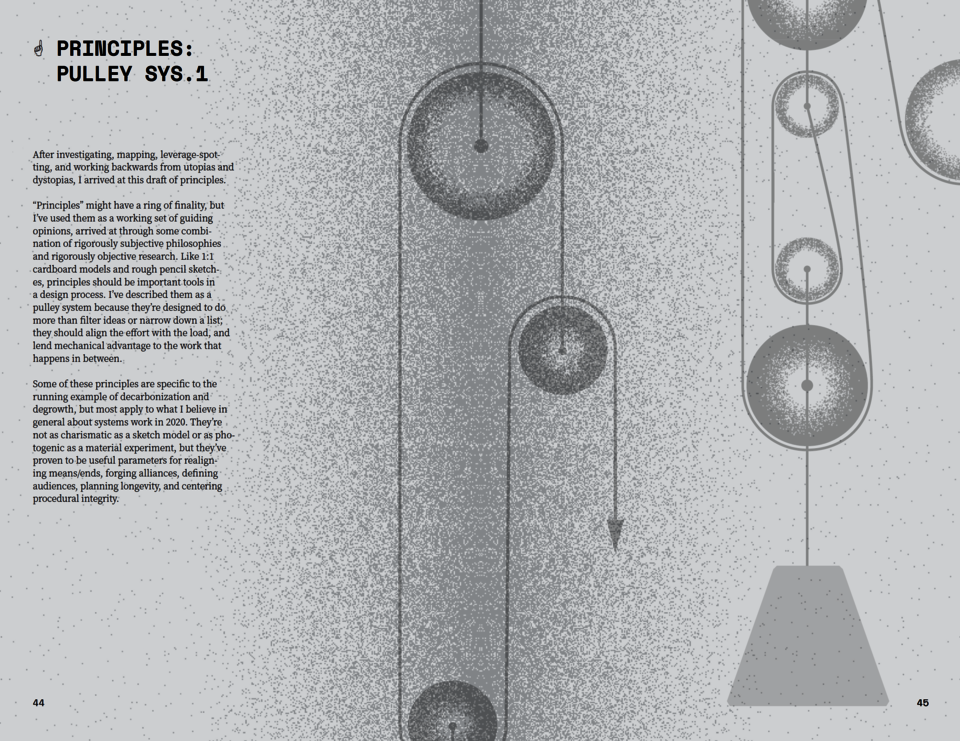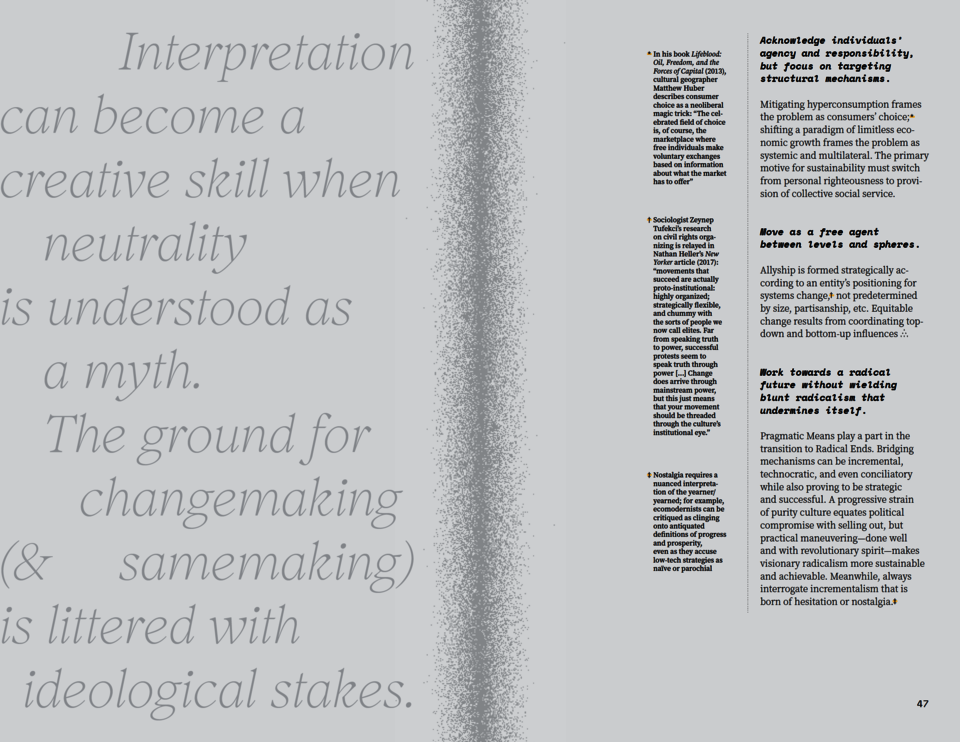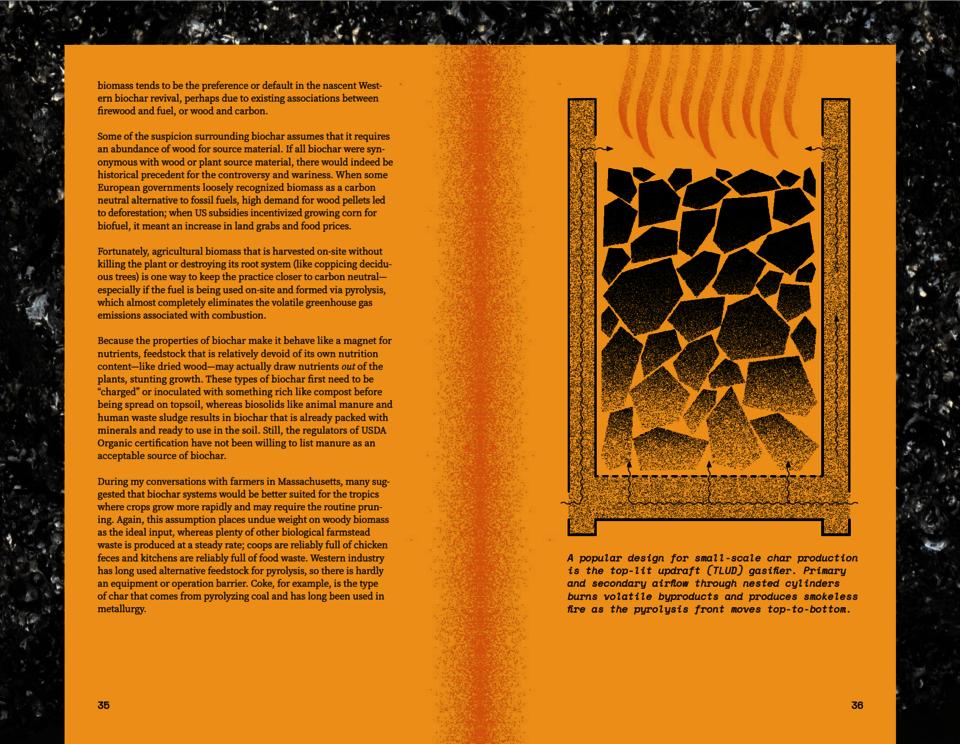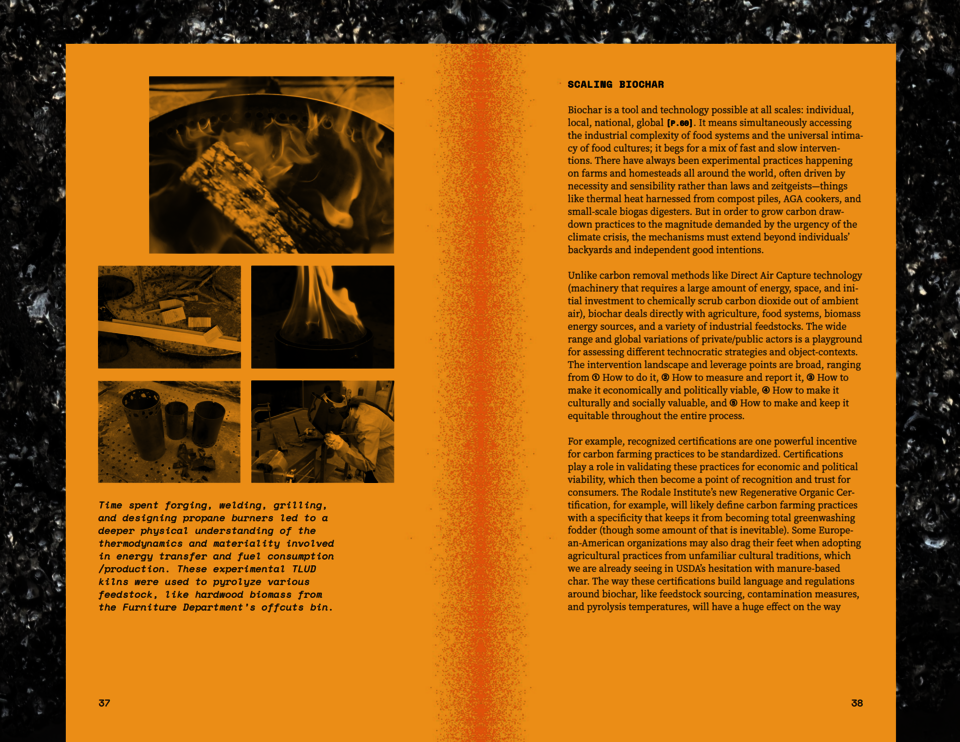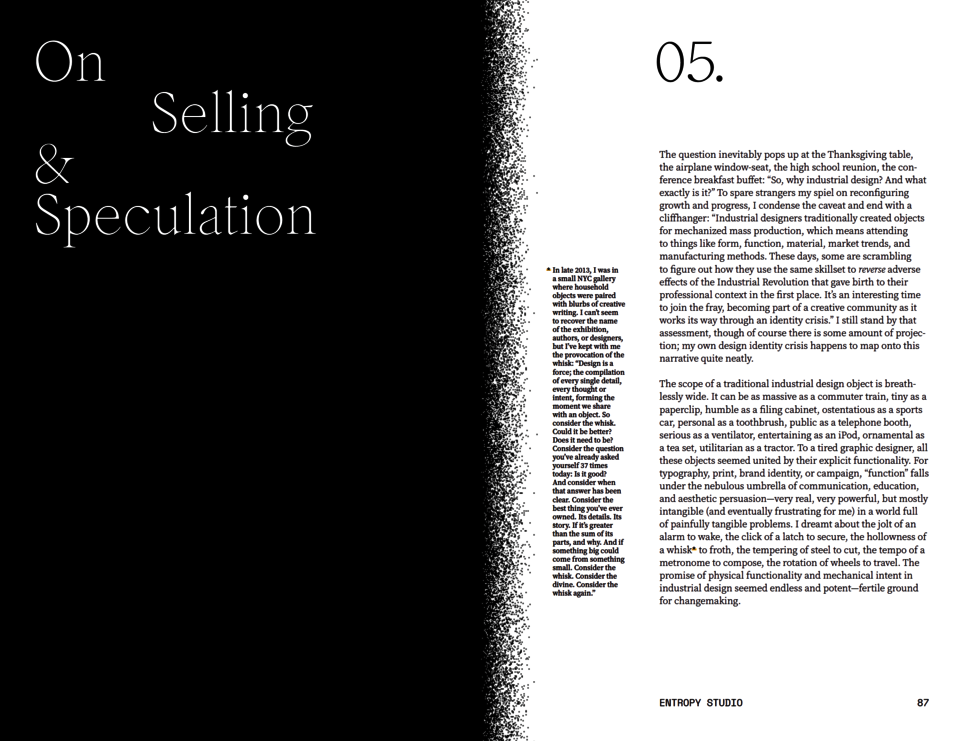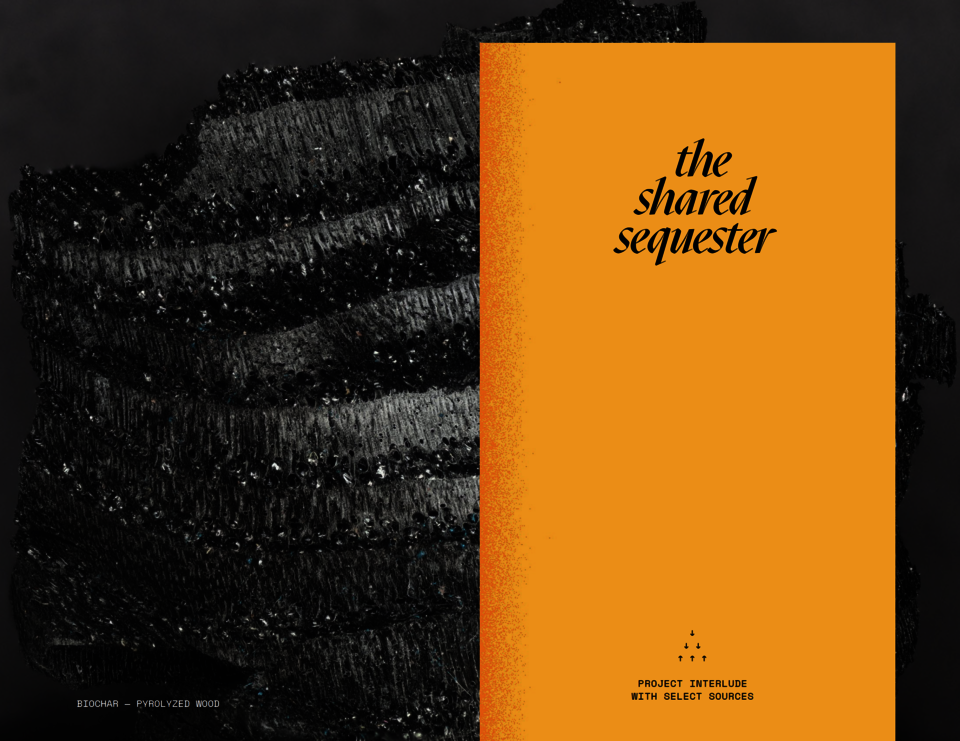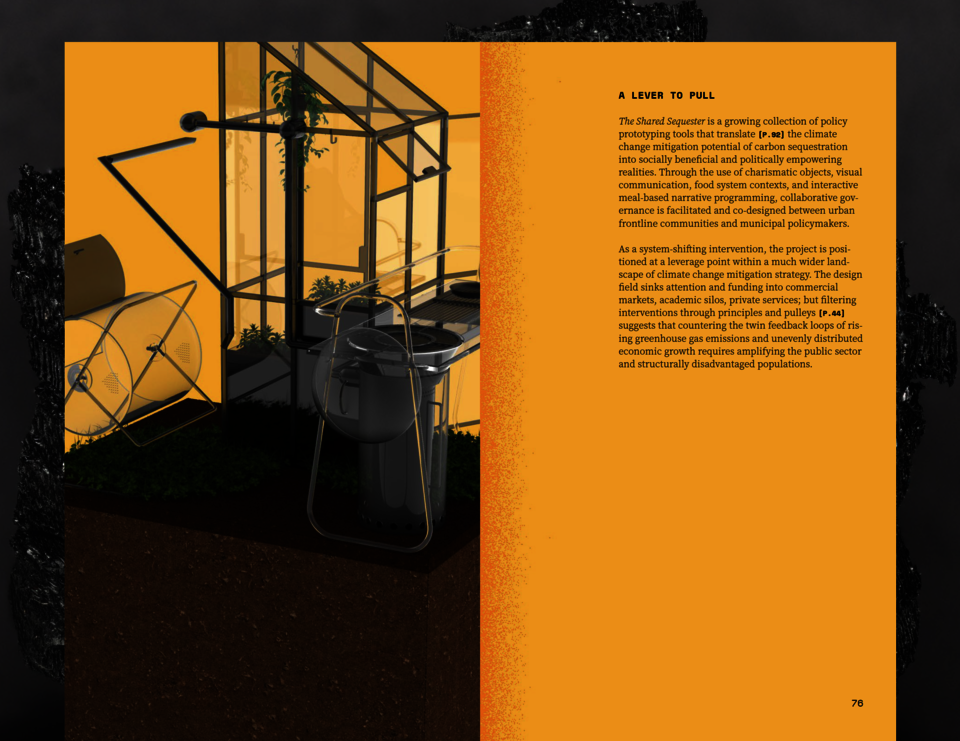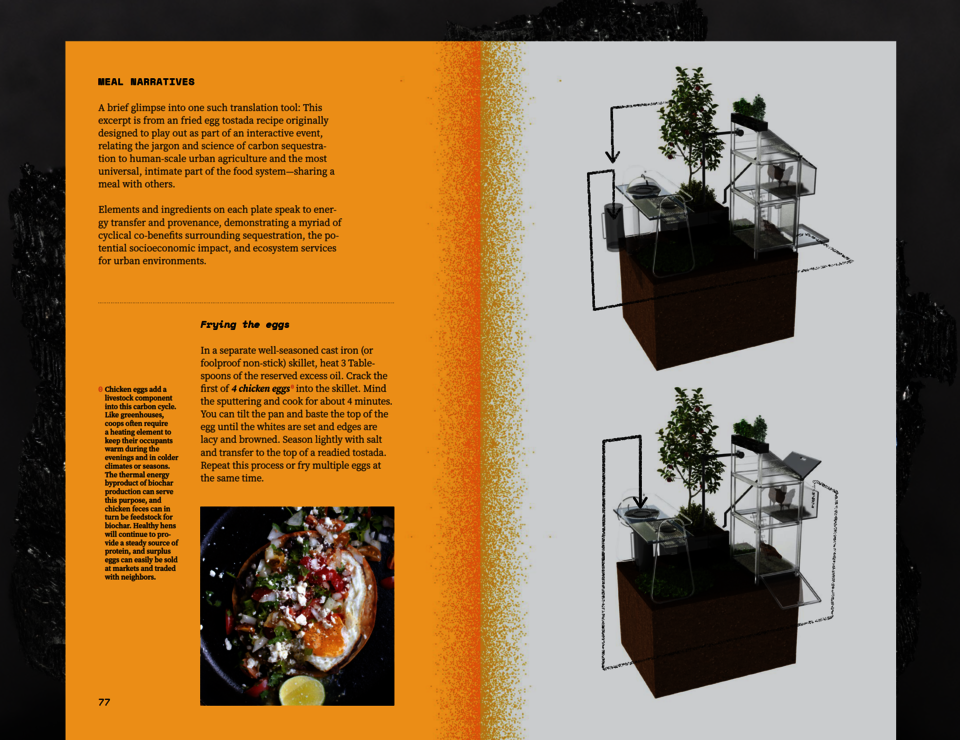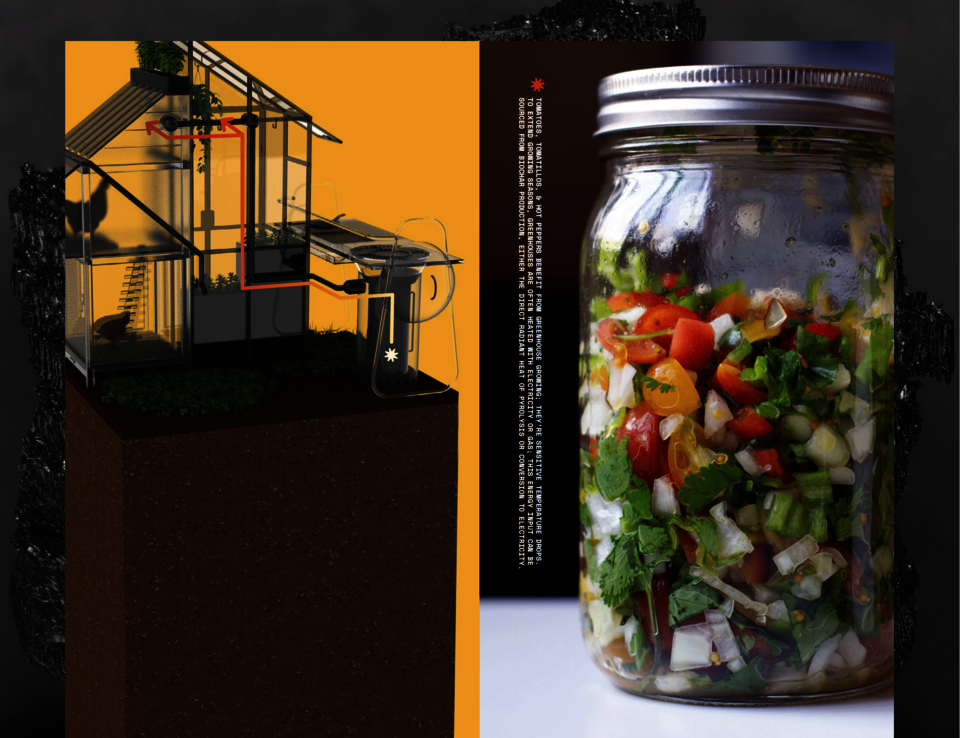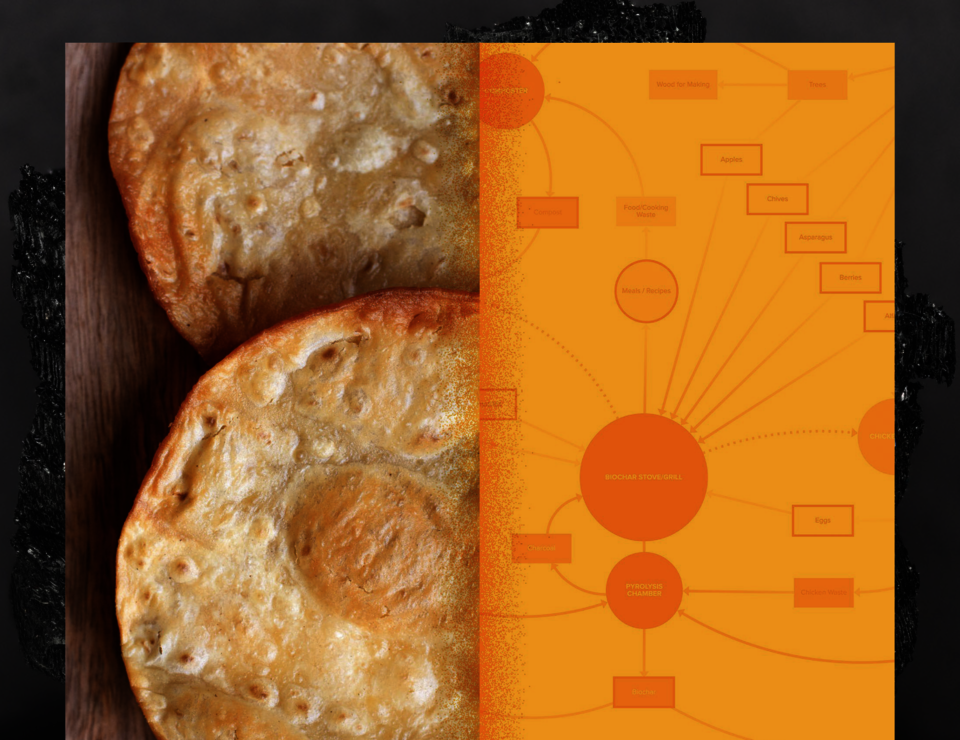Image

Irina V. Wang
Entropy Studio — The Shared Sequester
‘On Designing Entropy Studio’ is an interrogation of designers’ perceived role in addressing complex systemic issues. It calls for an updated understanding of what design ethics demand of us in the 21st century context of existential threat, global inequality, and the momentum of exponential growth. Even as the discipline rises to meet the challenge of these tangled problems, it clings onto processes, pedagogies, and tools handed down from past centuries’ -isms. Entropy Studio is a working proposal for narrowing the gap between design practice and clear theories of societal change. Transitioning current systems requires designers to articulate the preferred future and develop strategies around politics, economies, stakeholders, and timelines beyond the grail of form & function.
01. On Means & Ends
⇉ Essay excerpt from the author’s thesis book introduction.
I’ve never been too concerned with what it means to make good work. Good work is straight ahead: easy to spot and fun to strive toward. But for as long as I’ve thought of myself as a designer, I have grappled with what it really means to make “work for good.”
In the beginning, it was a question of what the work was about. The album cover represents humanity’s spiritual connection to nature. The sticker indicates you voted in the election. The infographic illustrates the gender pay gap. Soon, the question expanded into who or what the work was for. The canon of graphic design reassured me that ethics were dealt with in the 1960s, when top firms signed a manifesto1 against wasting their talents on cigarette advertisement. The proceeds from every poster are donated to the animal shelter. The font is more legible to dyslexic children. The logo is designed pro-bono for the food bank. The prefab shelters are for refugees. Next came the question of where the work was from and how it was made. The purview of industrial design—material, construction, manufacture—suggested to me that ethics could be addressed through provenance, labor, and access2. The tote bag is locally screenprinted with soy-ink on fair-trade cotton. The textile is woven at a revitalized mill that employs indigenous women. The label tells buyers how many miles the product travelled to its shelf. All these parameters remain relevant, but together they are a scatter-shot approach to fuzzy ideas of improvement. It’s not enough3 to state the intention and expend the effort, only for one thing to undermine the other. There is still a gaping chasm between most design practice and clear theories of societal change.
When I left a career in graphic design to begin this graduate program, I was driven by a very intense but vague inkling that I was always trying to make “work for good” without understanding or intentionally situating my designs within the systems that I knew they would inevitably occupy, reinforce, influence. At a systems level, making “work for good” is no longer a self-contained endeavor because the work aims to shift a network of complexities “towards better.” These days, I question what exactly we want to improve towards, and whether this is really the work that gets us there. What are the ends and their matching means? This is a political question and an economic question and a philosophical question before it is a design question—and that’s okay. It’s extremely exciting, because it demands a set of knowledges and contexts more diverse than the design canon alone can offer. It’s also a little bit terrifying, because this face of ethics is not appeased by a carefully curated client list. Instead, it asks: Is this work claiming to alleviate surface consequences of a broken system while entrenching its underlying conditions and components? Is it possible to subvert corrupt systems without getting your hands dirty? If the master’s tools cannot dismantle the master’s house4, do you forgo the incremental progress of in-house infiltration? What does your ego blurt out first, and what actually shifts the system? What ratios of visionary idealism and pragmatic complicity are required for ethical and urgent change?
As I struggle with the “how,” my portfolio of “what” keeps broadening to encompass all the ways society has gone wrong in a big and tangled way5. It’s surprisingly easy to draw the connection between my history with endangered language revitalization and this research into equitable carbon sequestration. Language loss, environmental extraction, and social injustice follow the same patterns of proliferation; they are all symptoms of a shared systemic sickness. Throw in nuclear weapons reduction and general climate change mitigation, and you could say that I’m motivated by a combined sense of urgency around ① structural inequities that disproportionately affect some, and ② existential threats that affect all. Absolutely none of this guarantees that the resulting work is “for good.”
Being urgent6 is to work as if the end justifies the means; responding to urgency instead requires recognition that the end is actively shaped by the means. This is the hard “how,” and it’s a dimension of design work that somehow still lives in the long shadow of popular discourse and pedagogy. Today’s tools, words, and ways of working as a designer make it exciting and relatively easy to address a problem like CO2 emissions while neglecting—even exacerbating—the socioeconomic conditions that have been historically overlooked in the environmentalist movement. While techno-fixes have incredible power to divert immediate damage, they’re also disproportionately represented in a daydreaming industry that has charged itself with solving problems—always thinking outside of the box, always thinking inside the master’s house. Sustainable design might be a trending tide that lifts all boats, but there remains a strong rip current of consumer-driven market mechanisms dragging everything out to sea. Shifting current systems toward an equitable post-carbon future requires every designer—as actant7 and participant—to contend with processes, stakeholders, politics, and timelines beyond the holy grail of form and function8. After all, climate change is a consequence of twin feedback loops: escalating greenhouse gas emissions (physical human activities) held up by inequitable, unsustainable growth paradigms (socioeconomic human constructions). The fast work of carbon removal must also be the slow work of reparations, degrowth, and redistribution9. The means are bound up with the ends. The thesis has always been the meta-thesis. Giving a name to Entropy Studio is simply giving myself permission to elevate the procedural as topical, beginning to define a system-shifting framework that remembers design ethics are defined by a harmonious “what” and “how.”
1 British graphic designer Ken Garland wrote and published First Things First (1964); Adbusters released an updated version (2000)
2 The issue of ethics in the industrial design canon is typically relegated to the work of Austrian-American designer Victor Papanek, who wrote scathingly about design’s neglect of everyday needs in Design for the Real World (1971)
3 Where design discourse has historically fallen short, there is plenty of language and precedent around cross-disciplinary ideas and inquiries like effective altruism, postcolonialism, and social movement theory
4 Civil rights activist Audre Lorde used this phrase to remind academic feminists that heterosexual white biases would never fully overthrow the patriarchy (1984)
5 The concept grew out of social planning; Horst Rittel and Melvin Webber describe wicked problems as “asking for a clarification of purposes, for a redefinition of problems, for a re-ordering of priorities to match stated purposes, for the design of new kinds of goal-directed actions” in “Dilemmas in a General Theory of Planning” (1973)
6 The first time I heard the sense of urgency cited as cautionary rather than inherently noble was in Kenneth Jones and Tema Okun’s Dismantling Racism (2001); it can sacrifice the necessary long-term solutions for visible ones that have quick turnaround and high funding
7 In Vibrant Matter (2009), political theorist Jane Bennett describes the relational agency of human and non-human actants that interact to form both natural and social worlds, expanding upon the Actor-network Theory developed by scholars like Bruno Latour
8 Architect Louis Sullivan coined form follows function in his essay “The Tall Office Building Artistically Considered” (1896) and the Bauhaus school immortalized this modernist design tenet as pedagogy; even when its hierarchy is challenged by postmodernism, the discourse rarely transcends a framework of aesthetic versus utility
9 See paragraph about debt in Essay 04. “On Growth & Globalism”
⇊ Spreads from the author’s thesis book.
Image
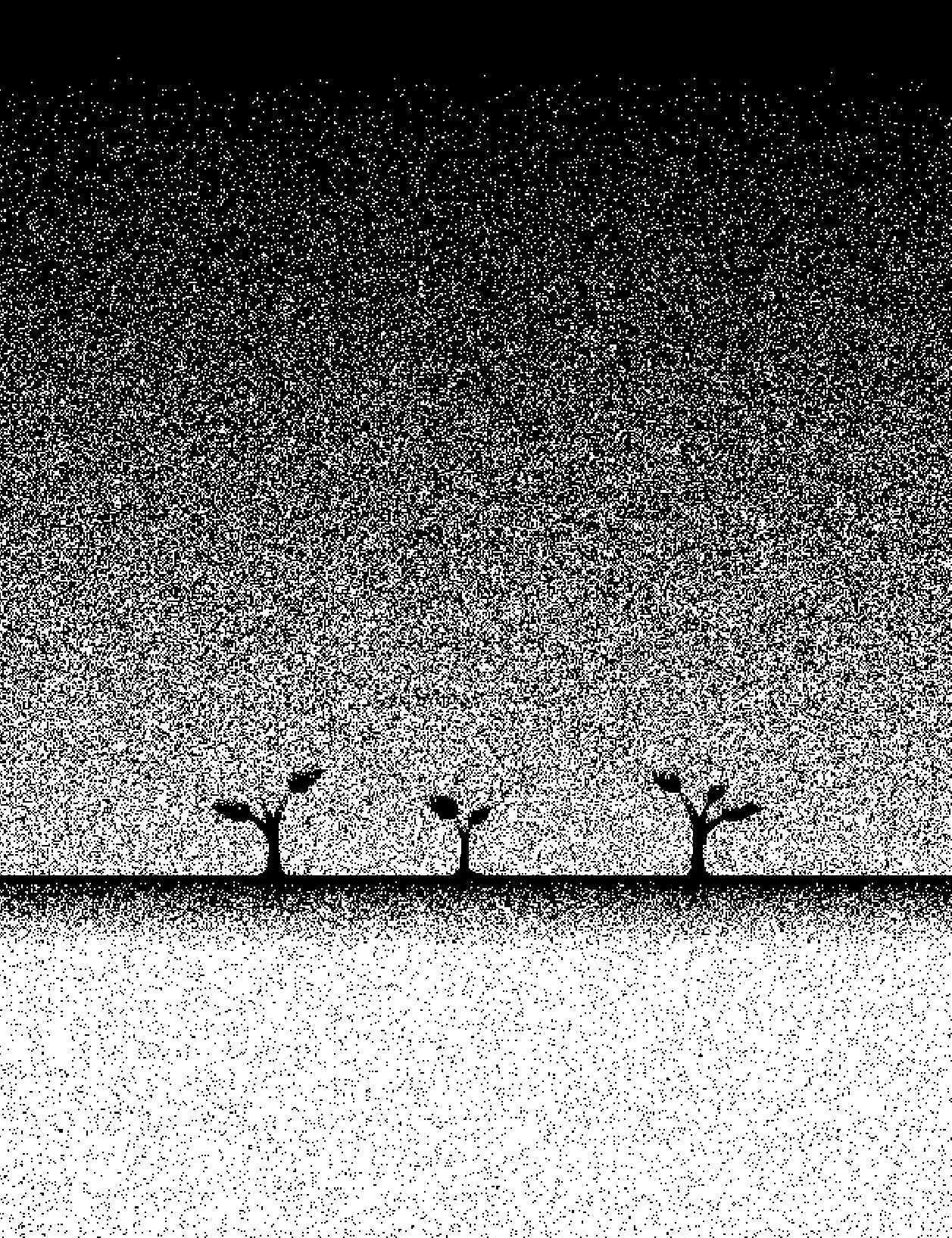
Image
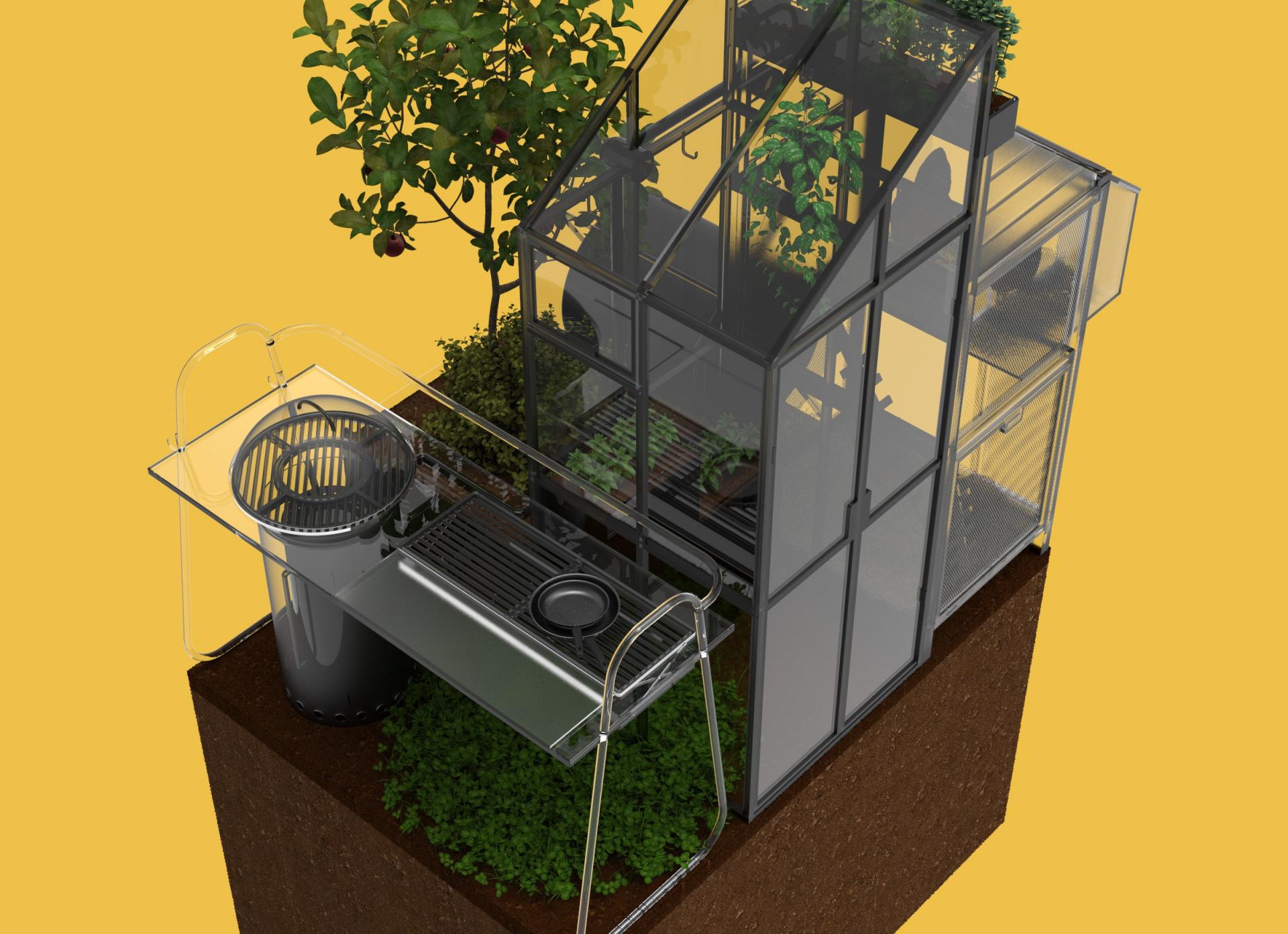
⇊ Spreads from a brief project insert in the author’s thesis book.
As a nested fledgling project of Entropy Studio, ‘The Shared Sequester’ addresses these questions through the lens of equitable biomass-based carbon sequestration and tests methodologies for future practice. Directing time and resources at the topic of climate change says little about whether the work itself is effective or ethical as a changemaking intervention. The climate crisis is a product of twin feedback loops: rising greenhouse gas emissions coupled with a paradigm of limitless growth that is unevenly distributed. The design field sinks attention and funding into commercial markets, academic silos, elite conversations, and private services, inflating the landscape of CO2 mitigation with so-called solutions that often entrench one feedback loop while attending to the other.
Focusing instead on collaborative governance between municipal policymakers and urban frontline communities, this project is a set of policy prototyping tools that translates biological sequestration science, energy cycles, and regenerative land-use into socially repairing and politically empowering realities: co-benefits like flood resilience, food sovereignty, air quality, and job security. Designing a shared vocabulary and forum for dialogue leads to meaningful co-governance that can begin shifting power structures in the process of implementing technocratic and scalable carbon drawdown. It’s the slow work embedded in the fast work — just one recipe for transitioning systems.
A NOTE:
Whether or not it’s explicit in the outcome, any project started and/or completed during a global anti-racism uprising and coronavirus pandemic is a product of both. Social equity, economic security, and physical health are as important now as they’ve ever been. Even with limited time and space, restricted access, and international disruption, the project mission remained focused on urban frontliners’ agency and structural leverage in policy conversations about local economic recovery or green jobs tied to international climate goals. These baseline conversations must begin by highlighting the very real connection between carbon shepherding and equal access to food, water, security.
At the time of writing [MAY 2020], this project will press on with additional funding from the RISD Graduate Commons Grant and sustained relationships. Testing, iterating, and co-designing tools with allied urban communities renders them increasingly relevant to various cultures and geographies. In the meantime, find more information or reach out at irinavw.xyz
